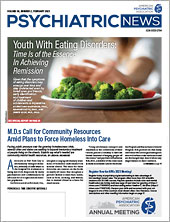Late last year the Centers for Disease Control and Prevention (CDC) released a
new guideline for prescribing opioids that includes updated and expanded recommendations for health professionals who provide pain care for adult outpatients with short- and long-term pain.
The guideline is meant to address challenges that developed in the wake of the 2016 guideline and to add more flexibility in opioid prescribing.
“Of particular concern, some policies purportedly drawn from the
2016 CDC Opioid Prescribing Guideline have been notably inconsistent with it and have gone well beyond its clinical recommendations,” the 2022 guideline states. “Such misapplication includes extension to patient populations not covered in the 2016 CDC Opioid Prescribing Guideline (e.g., cancer and palliative care patients), rapid opioid tapers and abrupt discontinuation without collaboration with patients, rigid application of opioid dosage thresholds, application of the guideline’s recommendations for opioid use for pain to medications for opioid use disorder treatment (previously referred to as medication assisted treatment), duration limits by insurers and pharmacies, and patient dismissal and abandonment.”
The 2022 guideline addresses the following:
•
Determining whether to initiate opioids for pain.
•
Selecting opioids and determining opioid dosages.
•
Deciding duration of initial opioid prescription and conducting follow-up.
•
Assessing risk and addressing potential harms of opioid use.
The guideline also supports the development and promotion of evidence-based treatments to manage pain and expands recommendations for tapering opioids for patients already receiving opioid therapy.
According to Christopher M. Jones, Pharm.D., Dr.P.H., M.P.H., acting director of CDC’s National Center for Injury Prevention and Control, the guideline includes new structural elements that make it very clear that the guideline is a clinical tool to support individualized care and should not be used as an inflexible standard of care or rigid policy or law.
“To emphasize flexibility and encourage individualized care in using the new guideline, we have highlighted overarching principles of safe and effective pain treatment rather than focusing on specific dosage thresholds,” Jones told Psychiatric News. “For example, we do not include a specific days supply recommendation or morphine milligram equivalent dose … like was done with the 2016 guideline.”
The guideline also addresses opioid prescribing for various populations that are often represented in psychiatric practice.
“Of particular note for addiction psychiatrists, general psychiatrists, and others working with patients who have substance use disorders or mental disorders, we have expanded the evidence base around the use of opioid pain medication and other pain treatments and risk mitigation and treatment strategies in certain groups, like older adults and pregnant people, and in people with conditions posing special risks, such as those with a history of substance use disorder and mental health issues,” Jones said.
Andrew J. Saxon, M.D., the director of the Center of Excellence in Substance Addiction Treatment and Education at the VA Puget Sound Health Care System and a former member of APA’s Council on Addiction Psychiatry, stressed the importance of evaluating patients who have been taking opioids long term (prescribed opioids continuously for more than 90 days).
“Patients currently on long-term opioid therapy for chronic pain who appear unstable or show a decrement in function should be thoroughly evaluated for opioid use disorder,” Saxon said. “If they have opioid use disorder, they should be transitioned from opioid therapy to medication for opioid use disorder, typically buprenorphine, though it could be methadone if an Opioid Treatment Program is available and the patient is amenable. If the patient does not have opioid use disorder or refuses medication for opioid use disorder, a careful clinical decision will need to be made regarding continuation of opioids versus tapering, with very careful monitoring in either case.” ■


